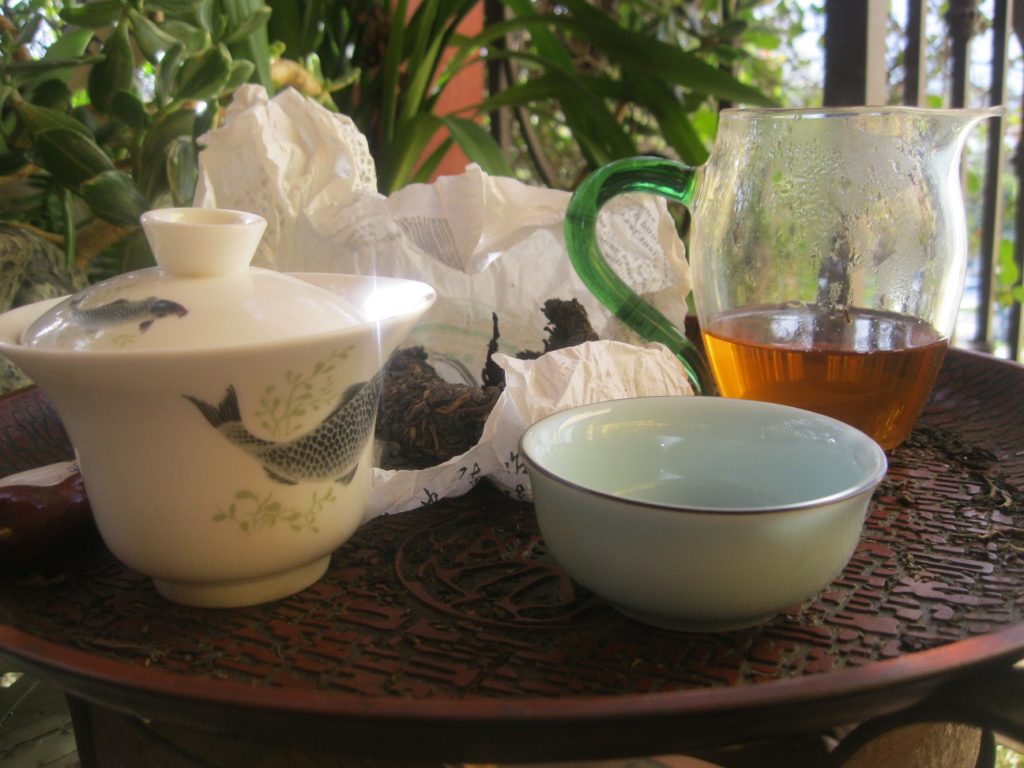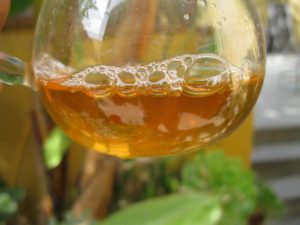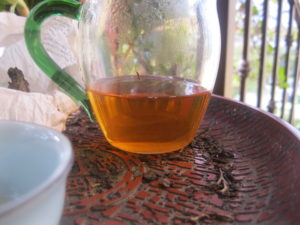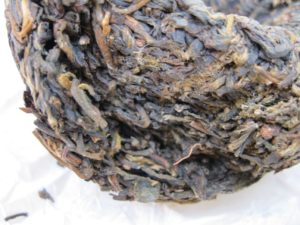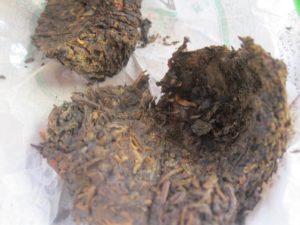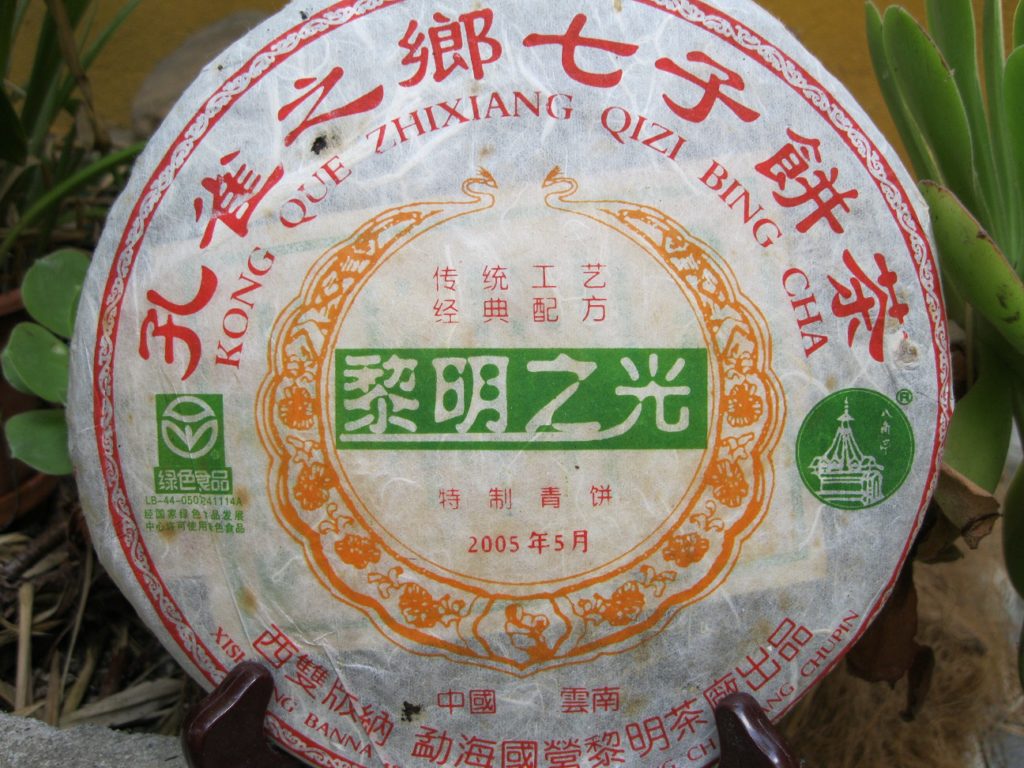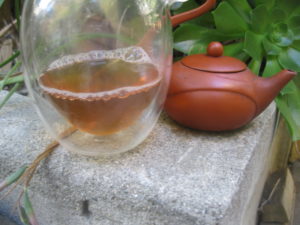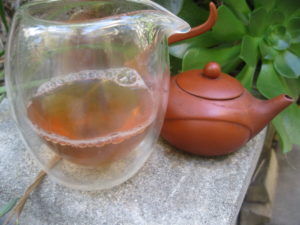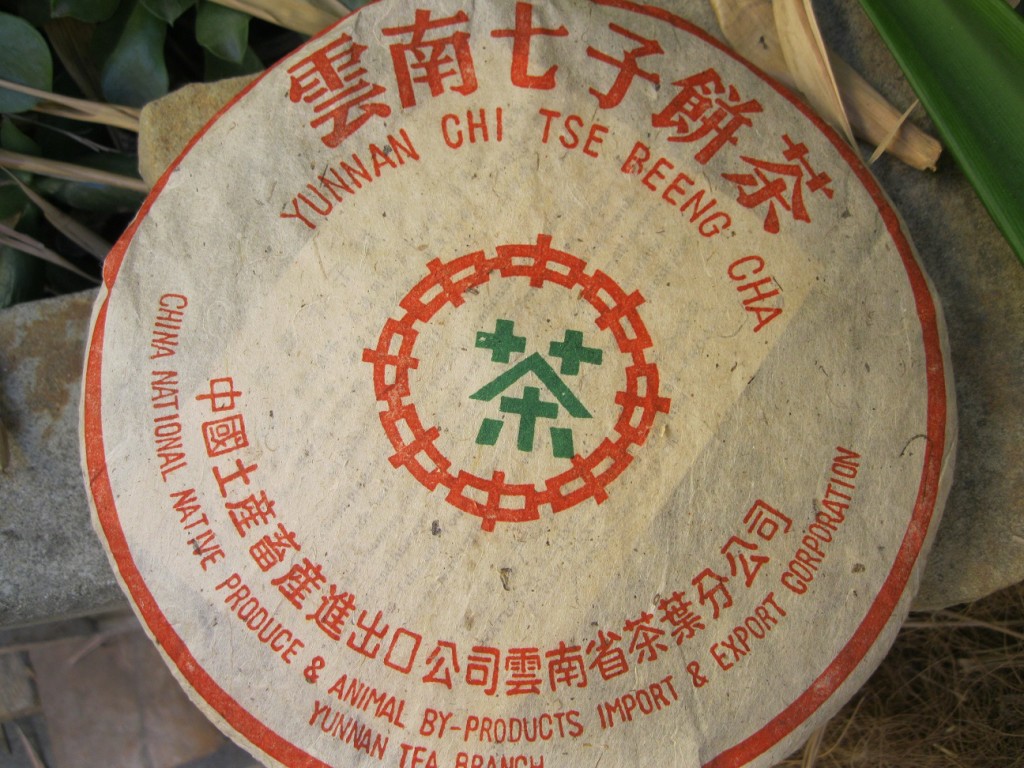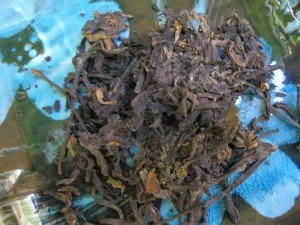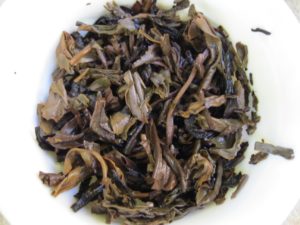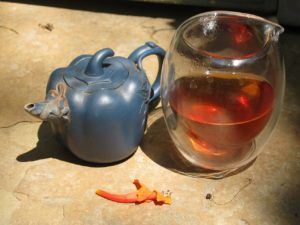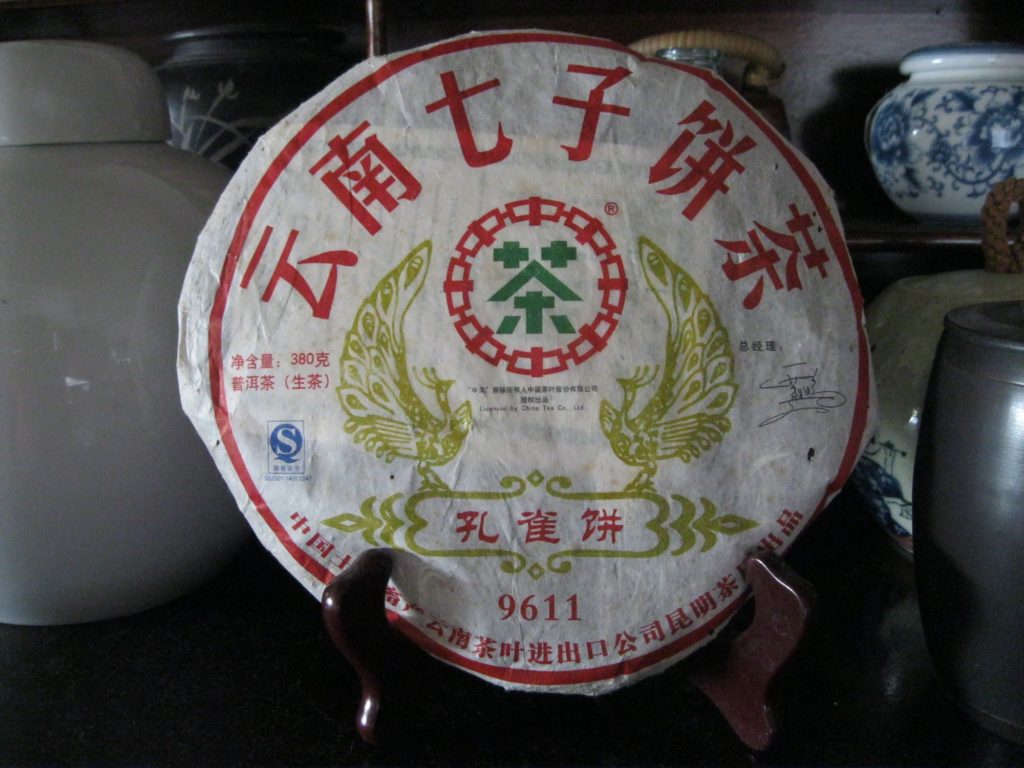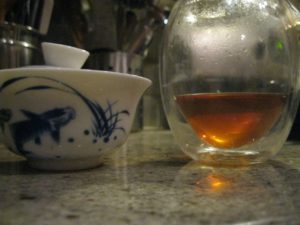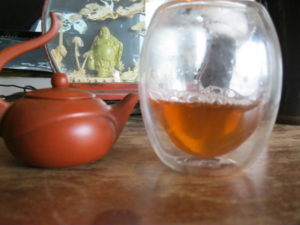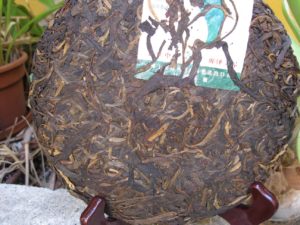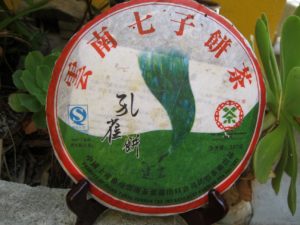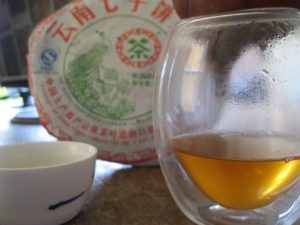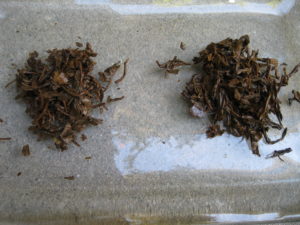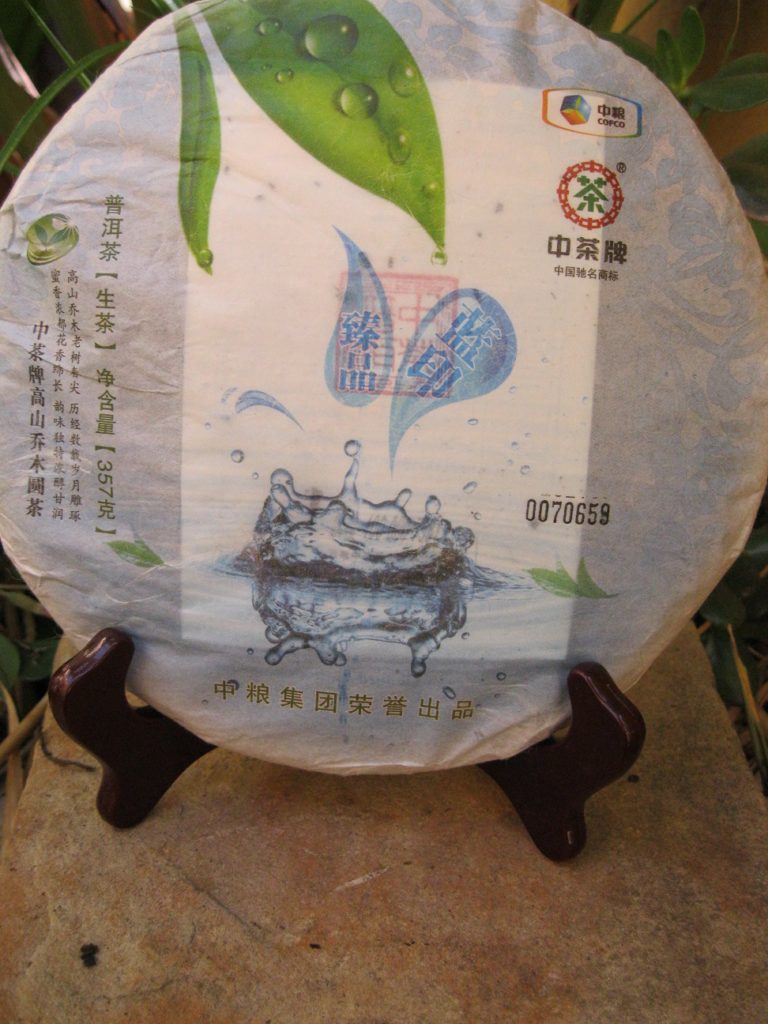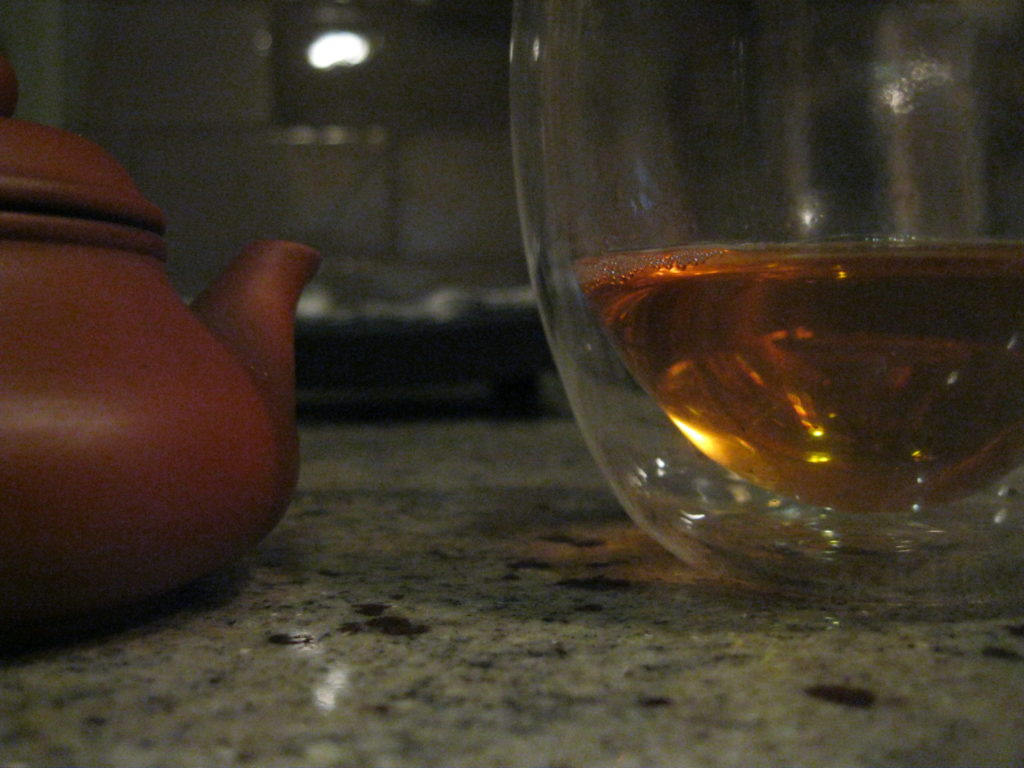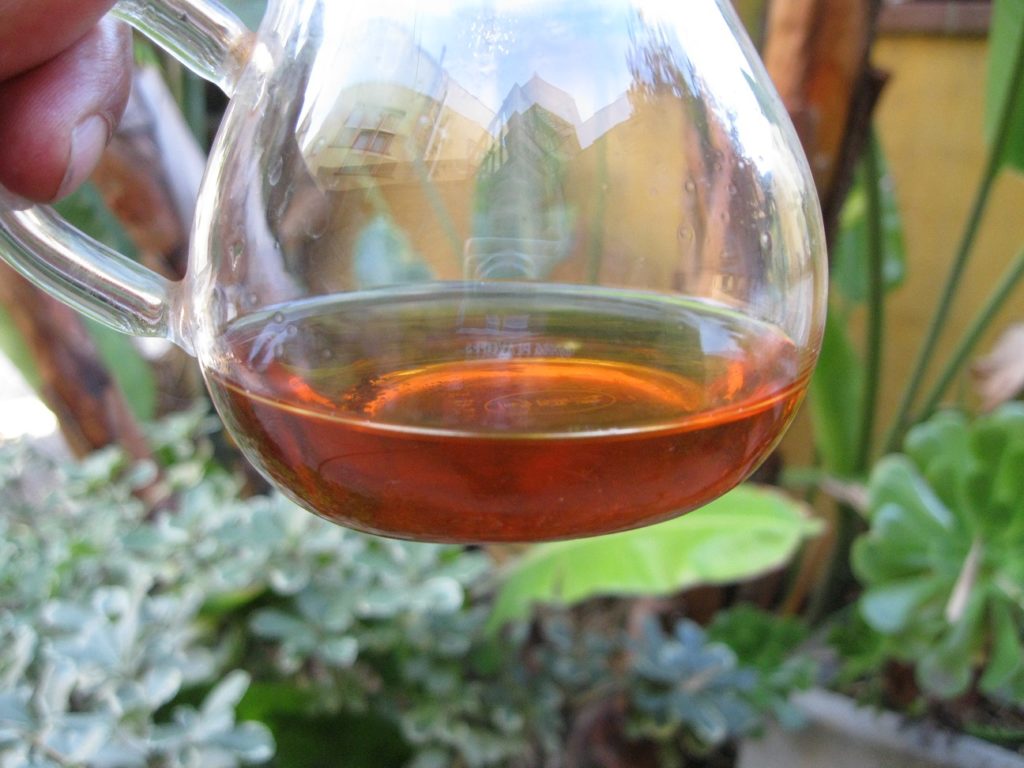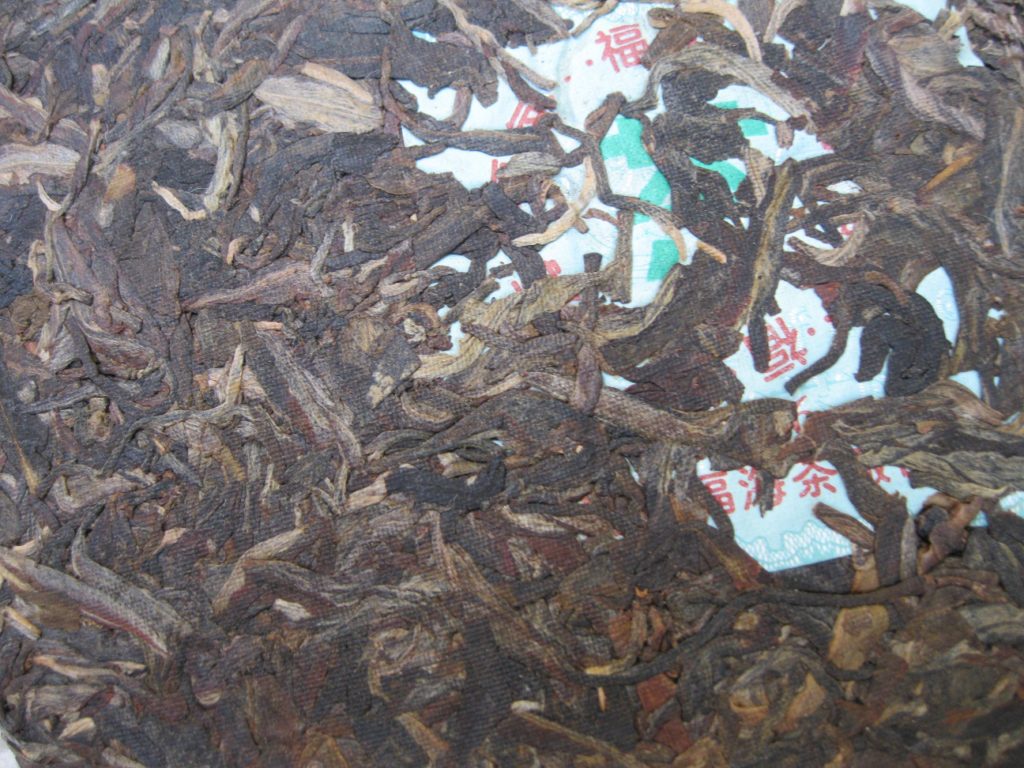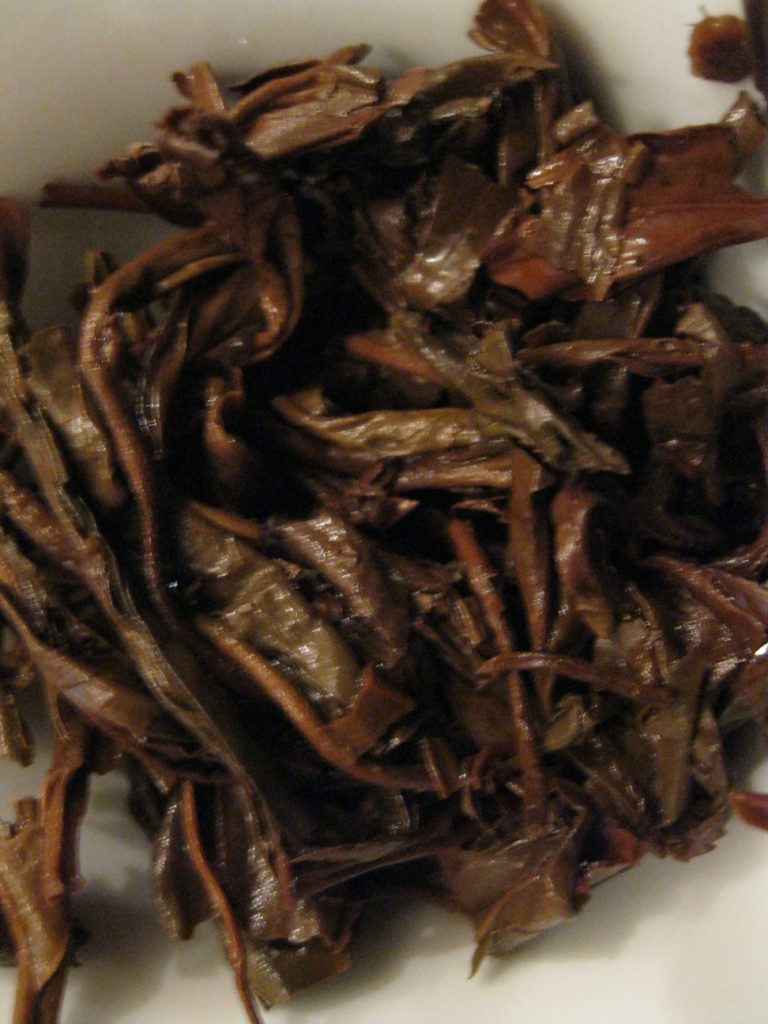Beginning Root Beer Notes: Tiger Puerh Tuo 250g
Beginning root beer notes are emerging in the Tiger Puerh Tuo 250g. What began as an overly aggressive, feisty production which transformed to incense is now mellowing. Don’t get me wrong, it’s not mellow but I did move up from the typical 6.5 g to 8. Today, I also tried it in the gaiwan .
I’ve been storing this since about Aug of ’16. I’ve not made it through the first tuo I opened as it was too strong for my tastes. Now is a different story. The direction it is changing speaks to the promising prospects for it future. There’s still quite a bit of astringency, but interestingly the bitterness is fading along with the floral notes. The astringency has a kind of siltiness to it. All of the macho seems to be converting into root beer. All of the apple notes from its youth are gone as well.
Let’s take a look at an earlier shot of the liquor
Here’s a shot from 21st Mar ’19
Here’s a close up from a couple years ago…
Here’s one from 21st Mar ’19
Now about the huigan and qi. The liquor goes down smooth with that silty astringency at the edges. As the liquor vanishes down the throat the cooling sensation of camphor and flowers emerge. This sensation builds to a crescendo, reaching into the throat, and leaving the mouth tingly. Some might find it a shade drying, while others may find that its cheekiness promotes salivation. Perhaps both. As for the qi, a pot or two should make you sufficiently stupid. I felt both very extra-sensory and high from it. It also produced an exceptional diuretic effect, whereby I p%%ed as if I’d drunk a gallon of beer, with just as much force!
At a cooler temp and a higher measure of tea, I’m picking up on some of the bitterness, pineapple/granny smith. There’s also just a hint of petrol developing. This production is no slouch.

